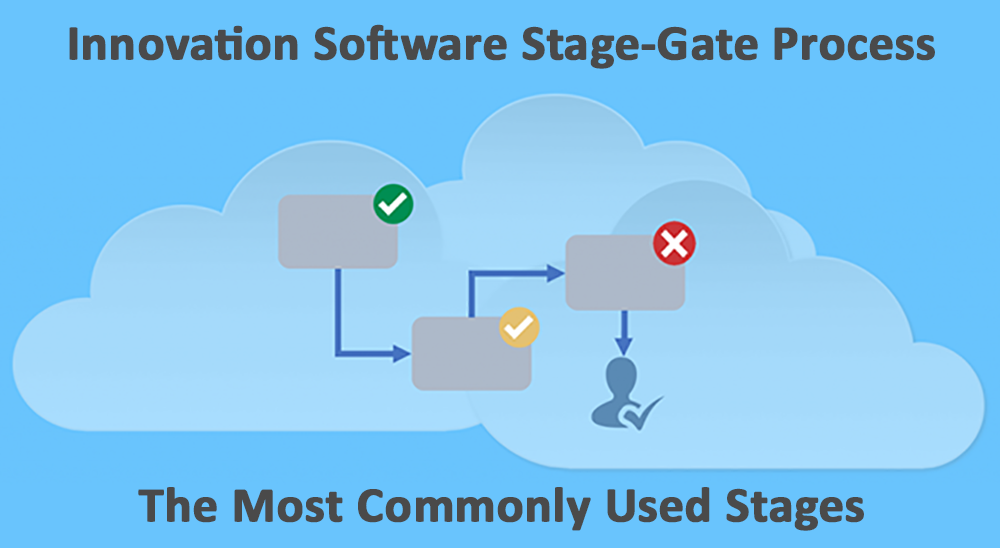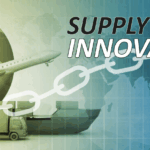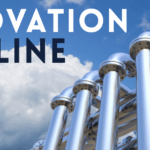[vc_row][vc_column][vc_column_text css=””]
What are the most commonly used innovation software stage-gate process stages?
When deciding upon your stages of innovation, it’s important to understand what those stages should be and how to best manage an idea at each stage. To clarify the process, we want to break down the most common stages within an innovation software stage-gate process.
How Does Innovation Software Adapt to Your Organization’s Needs?
Every organization approaches innovation a little differently, whether you’re running agile teams at a tech startup or managing cross-functional projects inside a sprawling enterprise. The innovation software is built to flex right alongside you.
Here’s how it works:
- Customizable Modules – Pick and choose from a selection of features like Portfolio Management, Stage-Gate workflows, Resource and Financial Management, and Team Collaboration tools, dialing in exactly what fits your process.
- Flexible Project Management Styles – Whether your team prefers classic Waterfall or the iterative pace of Agile, you can tailor project tracking to match the way you work.
- Seamless Integration – Data doesn’t exist in a vacuum. Sync up with existing systems—think Slack, Jira, Salesforce, and common analytics platforms—to keep everything connected and streamlined.
- Global Ready – Multi-currency, multi-lingual support ensures your global teams stay in lockstep, whether you’re collaborating from Tokyo, Toronto, or Toulouse.
- Cloud or On-Premises – Choose the deployment that matches your security requirements and IT preferences.
In short, the platform’s modular, configurable approach puts you in the driver’s seat—so your innovation process can be as unique and dynamic as your team.
What Sets This Innovation Software Apart?
Unlike generic solutions, this software comes loaded with a comprehensive library of proven innovation best-practices and a thoughtfully designed Stage-Gate process template, reflecting years of experience across diverse industries. It’s not just a toolbox—it’s more like hiring an expert coach who knows exactly how to make the most of your team’s creative potential.
What truly sets it apart?
- Curated Best-Practices: The platform is pre-loaded with practical workflows and stage definitions based on real-world successes, streamlining everything from idea capture to commercialization.
- Built-In Guidance: Each step of the Stage-Gate process is equipped with expert recommendations and tried-and-true templates, so your team always knows the “what” and the “why”—no guesswork needed.
- Exclusive Content: The step-by-step playbooks and evaluation criteria have been refined through collaboration with leading organizations in healthcare, energy, manufacturing, and technology, ensuring your process reflects today’s best thinking.
- Flexible Customization: You get the best of both worlds: out-of-the-box structure for quick launches, alongside customization options to match your company’s unique DNA.
- Continuous Support: The software isn’t static—it evolves, incorporating the latest insights from industry leaders, so your innovation pipeline stays up-to-date with emerging trends and global benchmarks.
With these built-in advantages, your organization benefits from a head start—eliminating inefficiencies, reducing trial-and-error, and empowering teams to bring the right ideas to market, faster.
What immediate benefits can executives, portfolio managers, and project teams gain from digitizing their innovation processes?
Digitizing your innovation process isn’t just about keeping up with the times—it’s about unlocking measurable advantages for everyone involved, from the C-suite to the project floor. Here’s how:
- Faster, Informed Decision-Making: Executives gain instant access to real-time data, enabling quicker evaluation of ideas, costs, and benefits. Instead of shuffling through spreadsheets or chasing down updates, leaders can make strategic choices with confidence—think fewer delays, more action.
- Enhanced Portfolio Management: For portfolio managers, digital platforms streamline the oversight of projects and initiatives. With tools from providers like Planview or HYPE, tracking progress, allocating resources, and analyzing performance becomes a breeze, offering clearer visibility and the ability to quickly pivot when priorities shift.
- Seamless Collaboration: Project teams and process owners benefit from collaborative workspaces—like those found in Trello or Jira—where everyone can contribute, share updates, and make decisions at each stage-gate. This reduces bottlenecks, ensures accountability, and accelerates the journey from new idea to implementation.
In short, digitizing innovation workflows delivers speed, transparency, and agility for every stakeholder—setting the stage for ideas to move efficiently from concept to value.
Common Frustrations with Innovation Software Tools
Before diving into the main stages, it’s worth acknowledging some of the typical headaches organizations face with their existing innovation software:
- Clunky and Outdated Interfaces: Many teams find themselves stuck with legacy platforms (think: Microsoft Access databases, SharePoint labyrinths, or a stack of tangled Excel spreadsheets) that feel more like obstacles than aids.
- Limited Flexibility: Off-the-shelf tools often force innovation managers into rigid workflows. Adapting to unique company processes can feel like forcing a square peg into a round hole.
- Poor Integration: Juggling multiple platforms—Jira for project management here, Salesforce for customer data there—can lead to siloed information, duplicate work, and plenty of confusion.
- Scalability Issues: As ideas flow in and projects multiply, software that once handled a handful of users can grind to a halt, unable to keep pace with organizational growth.
- Lack of Visibility and Analytics: It’s frustrating when extracting meaningful insights is an uphill battle, leaving innovation leaders making decisions in the dark.
- High Maintenance and Support Costs: Maintaining on-premise systems or cobbling together outdated solutions can eat into budgets and time, making IT teams wish for a cloud-based escape route.
Recognizing these obstacles is the first step in designing an innovation process—and selecting a software solution—that actually accelerates progress rather than slows you down.
Is This Stage-Gate Software Right for Your Organization?
Determining whether this Stage-Gate software is the right fit for your organization hinges on a thoughtful assessment of your current innovation process and goals. Start by asking:
- Does your team struggle to organize, track, or advance ideas through a clear workflow?
- Are you seeking greater transparency and accountability across departments or business units?
- Have you found it challenging to align stakeholders around go/no-go decisions at critical points?
If you’re nodding along, tools like this can help streamline your innovation pipeline—much like solutions from industry leaders such as Planview, Siemens, or SAP, which many global organizations rely on for end-to-end idea management.
To further assess fit, consider piloting a small initiative. Engage a cross-functional team to test the software’s features, from idea capture and review through evaluation and implementation tracking. Solicit feedback on usability, flexibility for your unique workflows, and the ability to produce actionable reports.
Finally, factor in integration with your existing systems and the level of support provided. The best fit will not only address current pain points but adapt as your needs evolve.
Why Choose This Stage-Gate NPD Software?
Selecting the right innovation software is more than just picking a tool—it’s about finding a solution that truly fits your organization’s goals and processes. What sets this Stage-Gate NPD software apart from solutions like SAP Innovation Management or Planview, for example, is a blend of smart engineering and practical know-how.
Here’s what makes this platform a standout:
- Best Practices Built In: The software comes pre-configured with field-tested methodologies and practical workflows, helping teams hit the ground running. There’s no guesswork or long configuration cycles—your innovation process is supported by trusted, ready-to-use frameworks that reflect what actually works.
- Expert Guidance at Every Step: Instead of generic templates, you benefit from expert-built content and guides—proven resources developed by professionals who have worked shoulder to shoulder with real innovation teams across industries.
- Tailored Flexibility: Every organization’s approach to stage-gate is unique, and this software doesn’t force you into a one-size-fits-all setup. The platform is highly adaptable, so you can align stages, gates, and criteria with your company’s specific practices and requirements—whether you’re in healthcare, energy, or consumer tech.
In short, while other vendors may offer basic stage-gate capabilities, this solution provides a depth of expertise, convenience, and customization that makes it easier to achieve consistent, repeatable innovation results, right from the start.
Who Can Benefit from Implementing or Upgrading to Specialized Stage-Gate NPD Software?
Choosing to take the digital leap—or to modernize your current toolkit—can transform the way your organization manages innovation from idea to launch. Here’s who stands to gain the most:
- Companies new to digital innovation management: If your current process for tracking ideas, projects, and approvals still depends on spreadsheets, emails, or whiteboards, adopting a Stage-Gate NPD platform (like those offered by SAP, Planview, or Accolade) can provide order, transparency, and a smoother workflow.
- Organizations aiming to replace legacy solutions: Those using outdated or piecemeal systems can benefit from the efficiency, analytics, and integrations now available in modern, purpose-built NPD software.
- Innovation leaders and sponsors: Managers responsible for steering the innovation pipeline will appreciate features that reduce manual tracking, support better decision-making, and ultimately help deliver winning ideas faster while staying on budget.
- Executives and portfolio managers: A centralized system gives leadership a real-time window into all active projects, stage progression, and resource allocation—making it much easier to manage risk, identify bottlenecks, and communicate results to stakeholders with accurate, up-to-date data.
Whether you’re a Fortune 500 manufacturer, a fast-growing tech firm, or a healthcare provider seeking to accelerate your product development, Stage-Gate NPD software can streamline collaboration, support compliance, and empower your teams with the clarity needed for innovation success.
Innovation Software Stage-Gate Process Stages Identified
Innovation Software Stage-Gate Process #1: New
Naturally, all ideas will start at the New stage. This is your innovation idea inbox and where most of your sorting will take place.
Innovation Software Stage-Gate Process #2: Request for Information
After an idea has been deemed interesting as a possible solution, the organization will typically require more information to dive deeper into the idea, what’s involved and the requirements or limitation of the proposed solution. Reaching out to the submitter will enable you to better understand the submitters background as an expert and how they will play a part in moving this solution forward. Perhaps a papers abstract was submitted as a possible solution. You’ll want to go over the paper in its entirety to understand the key details.
Innovation Software Stage-Gate Process #3: Under Review
Once enough information is put together to fully understand the proposed solution your team is fully enabled to review the idea and either drop the idea or move forward into issuing an NDA and build out terms that benefit both the organization and the submitter.
Innovation Software Stage-Gate Process #4: NDA Issued
The solution has been reviewed and has been chosen to move forward, typically an NDA is issued between the submitter and organization to discuss the terms in which it would benefit both parties to move forward. This is a critical stage for any proposed solution. Being able to instill confidence in the submitter can easily make or break that initial relationship and determine if an idea moves further or not. Assuming terms are easy to come to the idea moves forward into the Approved stage.
Innovation Software Stage-Gate Process #5: Approved
At this point you’ve gone through the majority of “testing” an idea and seeing how it stands against pressure and constraints imposed on it from you and your team. You’ve come to favorable terms and are ready to put the idea into production. This stage is a short one, requiring little work but is a holding gate for amazing ideas that need further action taken in our last stage.
Innovation Software Stage-Gate Process #5: Project Definition
You’ve approved the solution, but now it’s time to determine the scope of the project and move into the final stages of innovation. Capital requirements, time-frame, development, manufacturing and market research to name a few. From this point on your internal research and development team should be able to take over responsibility and get to market.
Flexible Deployment Options for Your Organization
When it comes to choosing how you deploy your innovation management software, flexibility is key. Most leading solutions offer both cloud-based and on-premises options, so you can decide what works best for your team’s needs and IT infrastructure.
For example, you can opt for a cloud deployment using platforms like Amazon Web Services (AWS) or Microsoft Azure, making it easy to scale and access your data from anywhere in the world. This is a smart option for organizations with distributed teams or strict uptime requirements.
If you have specific security or regulatory requirements, an on-premises installation lets you keep everything in-house, behind your own firewalls. This is a common approach for industries such as healthcare, finance, and government where compliance is non-negotiable.
It’s also worth noting that many of these platforms support multiple languages and currencies right out of the box, making them an excellent fit for global innovation teams.[/vc_column_text][/vc_column][/vc_row]






